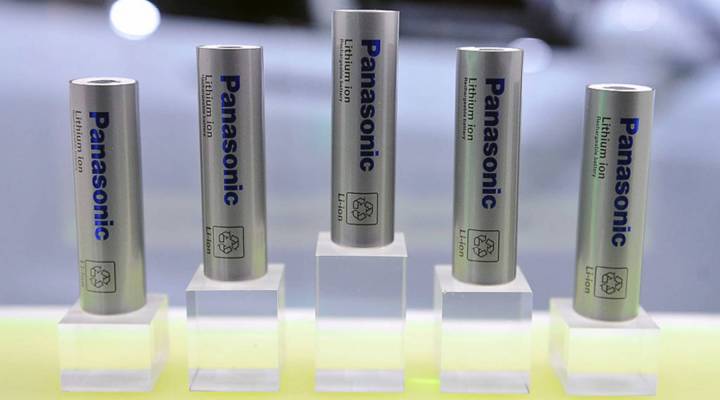
Lithium-ion batteries are about as good as they can get
Lithium-ion batteries are about as good as they can get

Batteries are far from perfect. It seems like we’re always reaching for a power cord to charge our phones or waiting by the power cord, wishing our phones would charge faster. And that’s when we’re not worried about the batteries in phones exploding and catching fire.
But improving battery technology isn’t just about making our devices run better. Batteries are important for renewable energy, electric cars and electrical grids. The problem is, the lithium-ion batteries that power our stuff don’t have the capacity to get much better. Marketplace Tech host Molly Wood talked with Kristin Persson, a professor of materials and engineering at University of California, Berkeley, who works on battery tech in a lab funded by the Department of Energy. Below is an edited excerpt of their conversation.
Molly Wood: What kinds of things could better batteries power?
Kristin Persson: First of all, we want to build out electrified transportation. We want more than just a few people to be driving electric cars. And you can also imagine service vehicles, such as your postman, driving electric vehicles. You can probably also imagine that we’d want to build out the electric grid. It needs modernization. It also needs to be able to use renewable energy sources to basically buffer the energy that’s coming into the grid. And then you can get a little more fanciful …
Wood: Oh yeah, please do.
Persson: Well, in terms of electrified flight, we’re starting to see a lot of interest in drones and small airplanes being powered by batteries.
Wood: Wow. I don’t know why that sounds terrifying, but it sounds a little terrifying. Maybe it’s just new.
Persson: It’s new, and I think we’re going to have to rethink how we’re dealing with it, yes. It’s clearly not just about the technology, but also how we implement it and what we’re going to be able to do and how we’re going to do it.
Wood: And that gets to this kind of fundamental question about battery technology. What is so hard about it? And what are the barriers to it getting good enough to power cities and airplanes and fleets of robots and factories?
Persson: So if you compare batteries to, for example, computers, the difference is really that in batteries you have to invent new materials to make them better, whereas in semiconductors, you’re inherently, most of the time, using the same materials and you’re just making them smaller, which is easier.
Wood: What are those materials?
Persson: In a battery, if you’re thinking lithium-ion battery, for example, you have three highly optimized materials: two solid electrode materials and a liquid electrolyte. And each of those materials are highly functional in many different ways. They have many different properties, such as how fast they transport ions or how stable they are or how high energy they can contain or store. So if you’re going to do a better battery, you have to come up, you have to discover, a completely new material that has to do as well and better on a few of those properties.
Wood: So you’re saying that right now, all the properties that make up a lithium-ion battery are at sort of max efficiency?
Persson: They’re not exactly at maximum, but they’re highly optimized. And you can’t have a battery that’s a little bit better on one of those properties, but worse on something else. You’re not going to be willing to sacrifice, for example, a little bit higher energy density if it’s a lot less safe. They have to play nicely together. They can’t react badly with each other in any ways.
Wood: When you say they have to play well together, you mean not blow up?
Persson: Blow up, or there are less catastrophic ways that are still detrimental. If the solid electrode reacts with the electrolyte such that a passivating film is formed on the surface of the material, then the ions can’t get through and the battery shuts down.
Wood: I mean, given the difficulty and given the hard wall that’s been hit in terms of battery technology, do you think that there’s going to have to be some other energy source? Or do you believe that there will be a breakthrough eventually?
Persson: No, we’ll get it to work. There are a number of very smart people working on this problem, and we will solve it. It will just take some time.
| Melting smartphones shed light on lithium-ion batteries |
| That battery in your cell phone packs a lot of history |
There’s a lot happening in the world. Through it all, Marketplace is here for you.
You rely on Marketplace to break down the world’s events and tell you how it affects you in a fact-based, approachable way. We rely on your financial support to keep making that possible.
Your donation today powers the independent journalism that you rely on. For just $5/month, you can help sustain Marketplace so we can keep reporting on the things that matter to you.


















